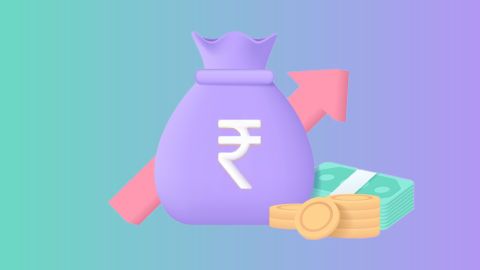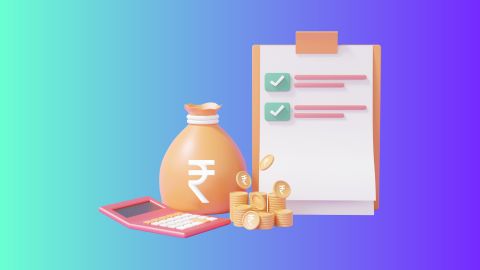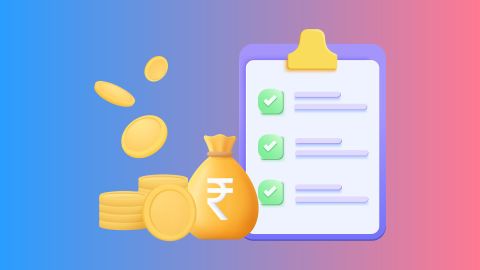3 min
22-August-2024
Personal loans offer financial flexibility for a variety of needs, from consolidating debt to covering unexpected expenses. However, taking on a loan comes with its own set of risks, particularly if unforeseen events disrupt your ability to make timely payments. Personal loan insurance is designed to mitigate these risks, providing a safety net that ensures your financial obligations are met even during challenging times. In this comprehensive guide, we’ll explore what personal loan insurance is, how it works, and whether it’s a good idea for you. We’ll also delve into its benefits, drawbacks, and key factors to consider before purchasing.
Additional read: Personal loans by NBFC
Personal loan insurance offers security by ensuring that your loan payments will be covered if you face qualifying events such as illness, unemployment, or death. This reduces the risk of default and protects your credit rating, giving you peace of mind.
2. Financial aid
In times of financial strain, personal loan insurance acts as a safety net by covering your monthly loan payments. This can be especially valuable if you experience job loss or other significant financial disruptions, as it alleviates immediate financial pressure and helps maintain financial stability.
3. Tax benefits
In some cases, the premiums paid for personal loan insurance may be eligible for tax benefits. Depending on your country’s tax regulations, you might be able to deduct the cost of insurance premiums from your taxable income. It’s advisable to consult with a tax professional to understand the specific benefits applicable to your situation.
4. Money-back option
Some personal loan insurance policies come with a money-back option. This means that if you don’t make a claim during the policy term, you may receive a refund of the premiums paid or a portion thereof. This feature provides additional value and reduces the perceived risk of purchasing the insurance.
Cost: Premiums for personal loan insurance add to your overall loan expense. These costs can be substantial, particularly if you opt for comprehensive coverage or if the premiums are high relative to your loan amount.
Coverage limitations: Policies often come with exclusions and limitations. For example, some conditions or types of unemployment may not be covered. Additionally, coverage might not extend to the full loan amount, leaving you with some financial responsibility.
Complex claims process: Filing a claim can be complicated and time-consuming. Insurers may require extensive documentation and evidence to process claims, and there can be delays in receiving payouts, potentially leaving you in a difficult financial situation during the waiting period.
Potential for redundancy: If you already have other forms of financial protection, such as savings or disability insurance, personal loan insurance might be redundant. It’s important to assess whether this insurance provides significant additional value compared to your existing safety nets.
Notify your insurer: Inform your insurance provider as soon as you encounter a qualifying event. This is often required within a specific timeframe.
Provide documentation: Submit necessary documentation to support your claim. This might include medical records, termination letters, or other relevant evidence.
Claim processing: The insurance company will review your claim and documentation. They may request additional information or investigate.
Receive payout: Once approved, the insurer will cover the loan payments as per the policy terms. This may involve direct payments to the lender or reimbursement to you.
Evaluate the cost of the insurance premium and determine if it fits within your budget. Compare different policies and providers to find one that offers the best value for your needs.
2. Policy conditions
Carefully review the policy conditions, including coverage limits, exclusions, and terms of payment. Ensure you understand what is covered and any potential limitations.
3. Claim settlement process
Investigate the claim settlement process of the insurance provider. Look for information on how straightforward it is to file a claim, the average processing time, and the provider’s reputation for handling claims.
4. Payment method
Consider how the premiums will be paid. Some policies require a lump sum payment upfront, while others may allow monthly installments. Choose a payment method that aligns with your financial situation.
5. Schedule your payments
Align the insurance premium payments with your loan repayment schedule to avoid any potential overlaps or gaps in coverage.
What is personal loan insurance?
Personal loan insurance, also known as loan protection insurance, is a policy that covers your loan payments in the event of certain circumstances that prevent you from fulfilling your loan obligations. This can include scenarios like unemployment, disability, or death. Essentially, it acts as a financial safety net, ensuring that your loan payments are handled even if you are unable to make them yourself due to unexpected life events.Additional read: Personal loans by NBFC
How does personal loan insurance work?
Personal loan insurance works by covering your loan payments under specific conditions outlined in your policy. Typically, when you purchase this insurance, you pay a premium either as a lump sum or as part of your monthly loan repayments. If you encounter a qualifying event, such as losing your job or facing a severe illness, the insurance policy steps in to cover the loan payments for a certain period or until the claim is settled. The specifics can vary depending on the policy provider and the terms of the insurance.Is it mandatory to have insurance for your personal loan?
Personal loan insurance is not legally mandatory. Lenders may offer it as an optional add-on to your loan agreement. While it is not a requirement to obtain a personal loan, having insurance can provide peace of mind by protecting you from the risk of default due to unforeseen events. It is ultimately up to the borrower to decide whether the benefits outweigh the cost and whether it fits their individual financial situation.Is it a good idea to insure a personal loan?
Deciding whether to insure a personal loan depends on your personal circumstances and risk tolerance. For individuals who have stable employment, adequate savings, and a low likelihood of facing severe financial hardship, the insurance may seem unnecessary. However, for those who are self-employed, have irregular income, or lack a financial safety net, personal loan insurance can be a prudent choice. It provides a layer of protection and helps avoid the potential stress of defaulting on a loan due to circumstances beyond your control.Benefits of personal loan insurance
1. SecurityPersonal loan insurance offers security by ensuring that your loan payments will be covered if you face qualifying events such as illness, unemployment, or death. This reduces the risk of default and protects your credit rating, giving you peace of mind.
2. Financial aid
In times of financial strain, personal loan insurance acts as a safety net by covering your monthly loan payments. This can be especially valuable if you experience job loss or other significant financial disruptions, as it alleviates immediate financial pressure and helps maintain financial stability.
3. Tax benefits
In some cases, the premiums paid for personal loan insurance may be eligible for tax benefits. Depending on your country’s tax regulations, you might be able to deduct the cost of insurance premiums from your taxable income. It’s advisable to consult with a tax professional to understand the specific benefits applicable to your situation.
4. Money-back option
Some personal loan insurance policies come with a money-back option. This means that if you don’t make a claim during the policy term, you may receive a refund of the premiums paid or a portion thereof. This feature provides additional value and reduces the perceived risk of purchasing the insurance.
Drawbacks of personal loan insurance
Personal loan insurance, while beneficial, has notable drawbacks:Cost: Premiums for personal loan insurance add to your overall loan expense. These costs can be substantial, particularly if you opt for comprehensive coverage or if the premiums are high relative to your loan amount.
Coverage limitations: Policies often come with exclusions and limitations. For example, some conditions or types of unemployment may not be covered. Additionally, coverage might not extend to the full loan amount, leaving you with some financial responsibility.
Complex claims process: Filing a claim can be complicated and time-consuming. Insurers may require extensive documentation and evidence to process claims, and there can be delays in receiving payouts, potentially leaving you in a difficult financial situation during the waiting period.
Potential for redundancy: If you already have other forms of financial protection, such as savings or disability insurance, personal loan insurance might be redundant. It’s important to assess whether this insurance provides significant additional value compared to your existing safety nets.
How to claim personal loan insurance?
Claiming personal loan insurance typically involves the following steps:Notify your insurer: Inform your insurance provider as soon as you encounter a qualifying event. This is often required within a specific timeframe.
Provide documentation: Submit necessary documentation to support your claim. This might include medical records, termination letters, or other relevant evidence.
Claim processing: The insurance company will review your claim and documentation. They may request additional information or investigate.
Receive payout: Once approved, the insurer will cover the loan payments as per the policy terms. This may involve direct payments to the lender or reimbursement to you.
Factors to consider before purchasing personal loan insurance
1. Loan insurance costEvaluate the cost of the insurance premium and determine if it fits within your budget. Compare different policies and providers to find one that offers the best value for your needs.
2. Policy conditions
Carefully review the policy conditions, including coverage limits, exclusions, and terms of payment. Ensure you understand what is covered and any potential limitations.
3. Claim settlement process
Investigate the claim settlement process of the insurance provider. Look for information on how straightforward it is to file a claim, the average processing time, and the provider’s reputation for handling claims.
4. Payment method
Consider how the premiums will be paid. Some policies require a lump sum payment upfront, while others may allow monthly installments. Choose a payment method that aligns with your financial situation.
5. Schedule your payments
Align the insurance premium payments with your loan repayment schedule to avoid any potential overlaps or gaps in coverage.




